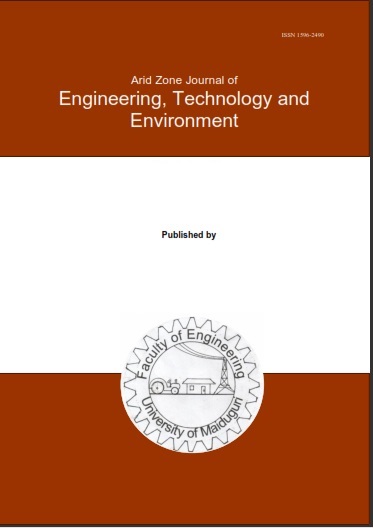Abstract
Increase in the cost of fossil fuels as a source of energy, coupled with environmental pollution associated with their consumption, calls for the search for alternative energy sources. Therefore, this study focused on the construction and performance evaluation of a biodigester to produce biogas as a renewable energy source for domestic use. A 24-litre biodigester was constructed and used in this study. The biogas was produced using a mixture of cassava peels and avocado seeds with cow dung as inoculum under mesophilic conditions. The cassava peels and avocado seeds were mixed in the ratio 5:1. The experiment was carried out under mesophilic conditions, while the mass and composition of the produced biogas were measured. The findings showed the production of 256 g of biogas corresponding to 0.438 m3. The biogas produced was found to contain 64.4% of methane, 5% of water vapour, 0.9% of O2 content, 560 ppm of CO, and 478 ppm of H2S. interestingly, a relatively higher methane content was observed in this study than in previous studies. Thus, implying the influence of the choice of the agricultural wastes (cassava peels and avocado seeds in this case) and inoculum used as substrate which enhanced anaerobic digestion process in connection with the improved biodigester. These results revealed that biogas generation could be achieved using locally sourced agricultural wastes and thus promoting green and renewable energy in agreement with the Sustainable Development Goals. Therefore, Biogas production would not only provide an alternative source of energy but would also aid in farmland and marketplaces' waste management.

This work is licensed under a Creative Commons Attribution-NonCommercial-NoDerivatives 4.0 International License.
Copyright (c) 2025 ARID ZONE JOURNAL OF ENGINEERING, TECHNOLOGY AND ENVIRONMENT

